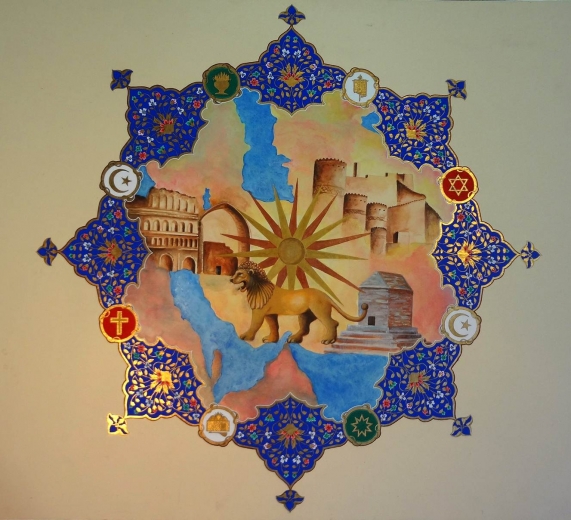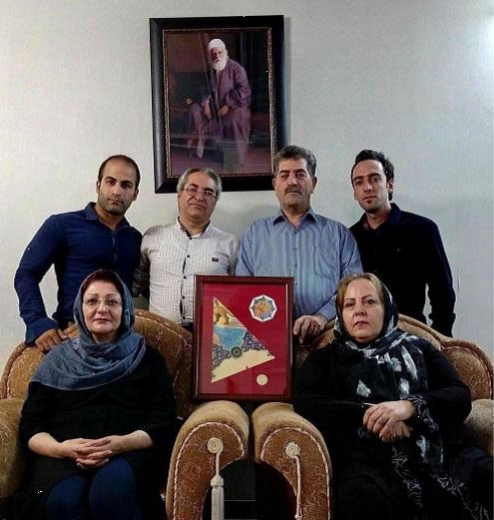Source: www.news.bahai.org

In recent years, individuals and groups from within and outside of Iran have raised the call for justice, human rights, and a culture of inclusion in the country. Though more and more voices are joining this chorus, it is still rare to see any vocal support from among Iran’s ecclesiastical class. On occasions when a clerical figure in Iran does speak out in support of the rights of citizens and minorities, it can inspire hope in countless hearts.
Against this backdrop, Ayatollah Abdol-Hamid Masoumi-Tehrani, a high-ranking religious cleric in Iran who is also a calligrapher and artist, has stood out for his public dedication to unity. His contributions to social harmony in Iran have drawn attention and acclaim in many parts of the world.
Recently Ayatollah Tehrani has painted a new work which he has divided into eight parts corresponding with eight religious groups in the country. He has dedicated parts of the painting to Zoroastrians, Jews, Christians, Mandaeans, Yarsanians, Baha’is, and Sunni and Shia Muslims in the country, all of whom he considers “essential aspects of Iran’s national culture as well as the entire region’s spiritual and religious reservoir.”

“Our national identity would be incomplete without each one of them,” he writes in a statement on his website.
The dividing of his painting symbolizes the fragmentation of the diverse populations that constitute Iran’s citizenry-a fragmentation he attributes to religious fanaticism and claims of privileged access to truth.
Explaining the symbolism of dividing his painting, he states: “As the body politic of human society would suffer because of estrangements and separations, likewise each section of this piece would be incomplete if it remains unaccompanied by the other sections. This piece is only complete when all the parts are put together.”

In the past, Ayatollah Tehrani has made other gestures of reconciliation and brotherhood toward religious minorities. In April 2014, for example, he gifted a calligraphic rendering of a sacred verse from the Baha’i writings to the Baha’is of the world. His action at once acknowledged the persecution of Iran’s largest religious minority and expressed a wish that the Baha’is of Iran should be allowed their rightful place beside their fellow citizens, working for the prosperity and happiness of their country.
His courageous actions as a member of Iran’s religious clergy have resonated with many inside and outside of the borders of that country and inspired a number of his counterparts from other Muslim denominations as well as other religions around the world to voice their support for his actions towards peaceful religious coexistence. (See side bar for related stories)
With this latest action, Ayatollah Tehrani captures the yearning of many of his fellow citizens for “a future where this land does not only belong to a certain religion, class, ethnicity, or ideology but belongs, without discrimination, to all Iranians, regardless of religion, attitude, or gender”.
Leave a Reply